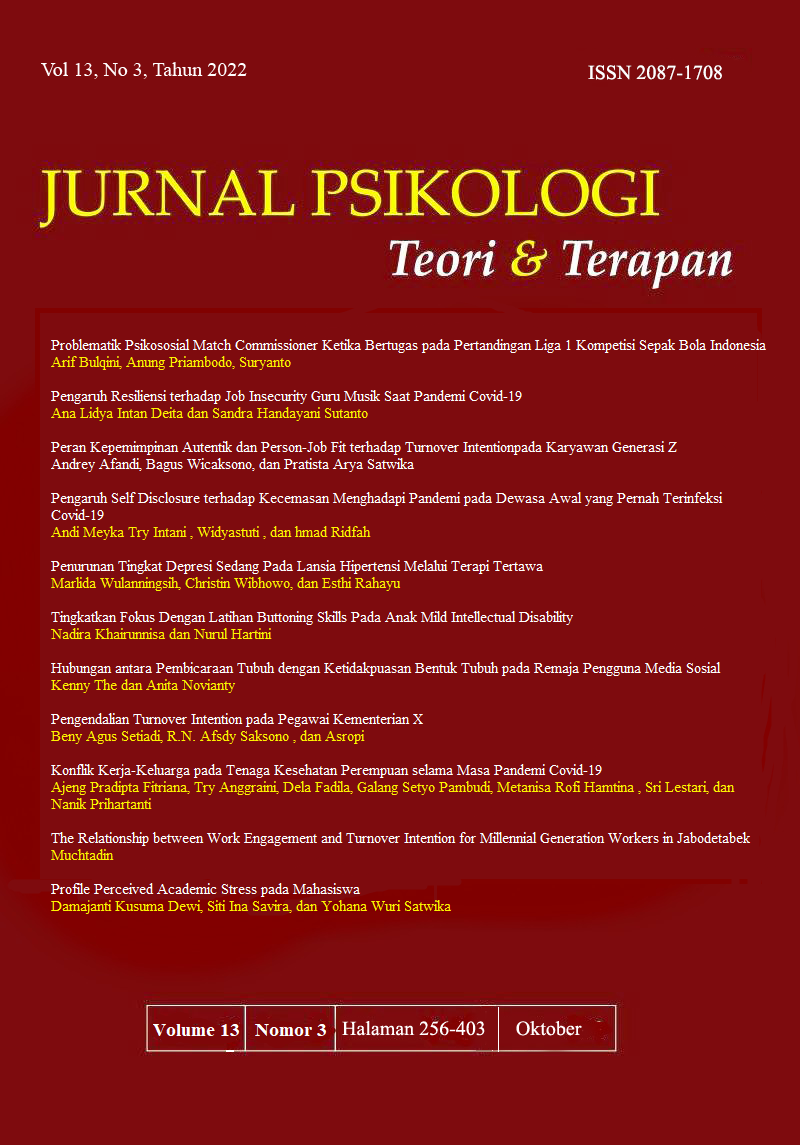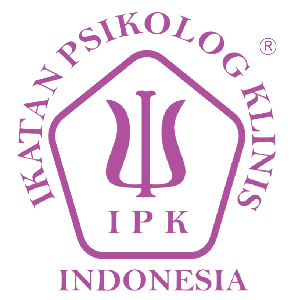Tingkatkan Fokus dengan Latihan Buttoning Skills pada Anak Mild Intellectual Disability
DOI:
https://doi.org/10.26740/jptt.v13n3.p318-330Keywords:
Atensi, Buttoning skills, Intellectual disabilityAbstract
Children with intellectual disabilities have deficits in general
mental abilities due to insignificant cognitive development.
The deficits result in weak attention functions that difficulty
maintaining focus and are easily distracted. Therefore, they
failed to meet standards in responsibility including daily life
aspects. Implementing behavior modification enhances
mastery of daily life skills and also training focuses in order
that children become more independent. This study aims to
examine whether buttoning skills practice could increase
focus on intellectual disability children. The experimental
approach was carried out with a single case AB with
backward chaining technique assisted by prompting and
giving positive reinforcement. The participant was a 9-yearold girl with the initials ZR who was diagnosed with mild
intellectual disability. Assessment based on accomplishment
following the stages systematically. The results show there is
an improvement trend in mastering buttoning skills. This is
due to appropriate positive reinforcement being selected that
motivated participants to focus on completing tasks.
Repetition makes participants become more acclimated to
wear button-up clothes. This skill practice could be an option
to encourage focus on intellectual disability children.
Anak dengan intellectual disability mengalami defisit intelektual sebab perkembangan kognisi yang tidak optimal. Kondisi ini menyebabkan lemahnya fungsi atensi yang merupakan faktor signifikan dari perkembangan kognitif. Akibatnya anak mengalami hambatan pada kemampuan dalam keterampilan adaptif, sosial serta konseptual. Akan tetapi anak mild intellectual disability masih dapat dibina walau perlu pendampingan. Mereka dapat diajarkan keterampilan sehari-hari untuk meningkatkan kemandirian. Keterampilan harian self-help dressing menjadi salah satu kebutuhan, termasuk berlatih memasang-melepas kancing (buttoning skills). Buttoning skills membutuhkan tahapan yang tersistematis sehingga membantu anak berkonsentrasi. Penelitian ini adalah single case AB design pada anak mild intellectual disability berusia 9 tahun. Intervensi yang digunakan adalah backward chaining dibantu teknik prompting dan pemberian positive reinforcement. Hasil buttoning skills dengan intervensi yang ditetapkan mendapatkan gambaran adanya peningkatan keterampilan serta membangun fokus dan dorongan pada anak.
References
APA. (2013). Diagnostic and statistical manual of mental disorder (5th ed.). Library of Congress Cataloging-in-Publication Data.
Harris, J. (2006). Intellectual disability: Understanding its development, causes, classification, evaluation, and treatment. Oxford University Press.
Laureys, S., & Tononi, G. (2009). The neurology of consciousness: Cognitive neuroscience and neuropathology (1st ed.). Elsevier.
Lukens, E., & Mcfarlene, W. (2004). Psychoeducation as evidence-based and crisis intervention. Oxford University Press.
Martin, G., & Pear, J. (2015). Behavior modification: What it is and how to do It (10th ed.). Pearson Education Inc.
Martinez, R. M. (2019). Attach me: A strategy to develop the buttoning competency of kindergarten pupils using parent-made material. Ascendens Asia Journal of Multidisciplinary Research, 3(2C), 103.
Matson, J. L. (2007). Handbook of assessment in persons with intellectual disability (Vol. 34). Elsevier.
Miltenberger, R. G. (2012). Behavior modification: Principles & procedures (5th ed.). Wadsworth.
Schalock, R. L., Borthwick-Duffy, S. A., Bradley, V. J., Buntinx, W. H. E., Coulter, D. L., Craig, E. M., Gomez, S. C., Lachapelle, Y., Luckasson, R., & Reeve, A. (2010). Intellectual disability: Definition, classification, and systems of supports (11th ed.). American Association for Intellectual and Developmental Disabilities.
Schweizer, K. (2010). The relationship of attention and intelligence. In Handbook of Individual Difference in Cognition. (pp. 247-259). Springer.
Downloads
Published
How to Cite
Issue
Section
License

This work is licensed under a Creative Commons Attribution-NonCommercial 4.0 International License.
Authors who publish in this journal agree to the following terms:
Copyright in any article is held by the author.
The author grants the journal, publication rights with the work simultaneously licensed under a Creative Commons Attribution License that allows others to share the work with an acknowledgment of the work's authorship and initial publication in this journal.
Authors may enter into separate, additional contractual arrangements for the non-exclusive distribution of the journal's published version of the work (e.g., posting it to an institutional repository or publishing it in a book), with an acknowledgment of its initial publication in this journal.
Authors are permitted and encouraged to post their work online (e.g., in an institutional repository or on their website) prior to and during the submission process, as this can lead to productive exchanges, as well as earlier and greater citation of published work.
 Abstract views: 1269
,
Abstract views: 1269
, PDF Downloads: 985
PDF Downloads: 985


















